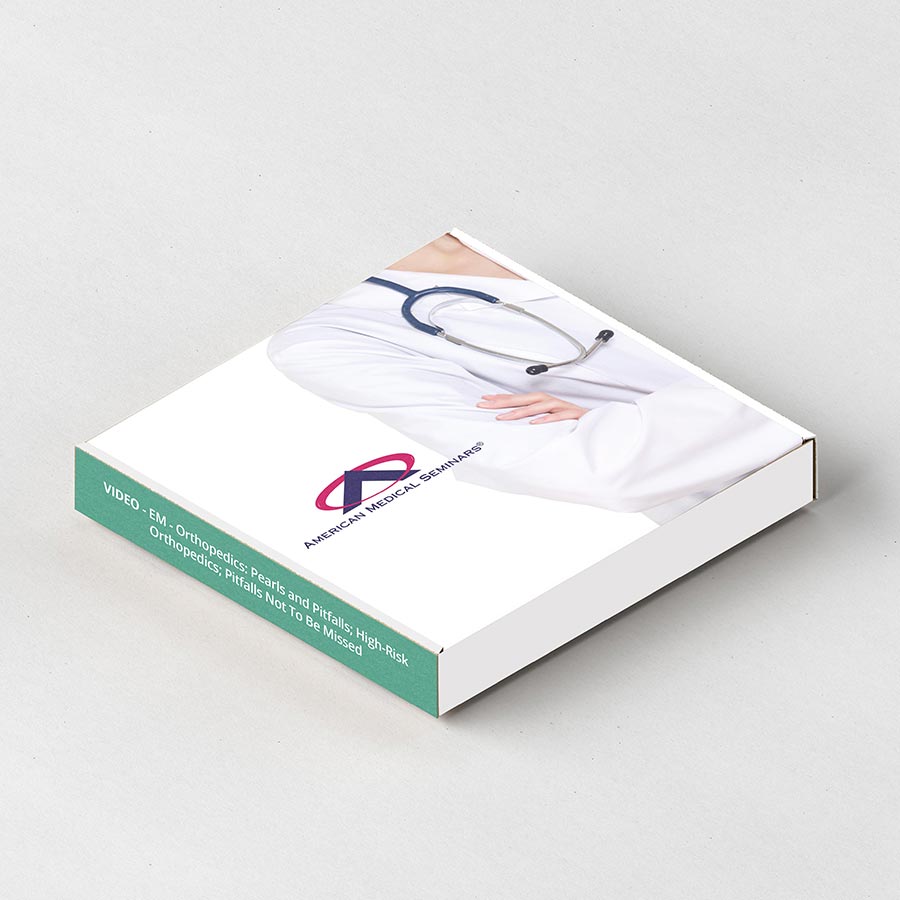Product Description
Expiration Date: July 1, 2019
Title: Emergency Medicine – Orthopedics: Orthopedic Pearls and Pitfalls; High-Risk Orthopedics; Trauma and Orthopedic Pitfalls Not To Be Missed
Faculty: Kenneth H. Butler, D.O., F.A.C.E.P., F.A.A.E.M.; Joel Kravitz, M.D., F.A.C.E.P., F.R.C.P.S.C.; and Andrew D. Perron, M.D., F.A.C.E.P., F.A.C.S.M.
Original Release Date: July 1, 2016 Review Date: July 1, 2017 Expiration Date: July 1, 2019
TOPIC 1: Pediatric Orthopedic Pearls and Pitfalls.
Pediatric orthopedic injuries are frequently seen in the Emergency Department. This population is at risk for missed or mis-managed orthopedic injuries based on inability to provide a history, presence of growth plates and ossification centers, and the imbalance of stronger ligaments and pliable bone. Upon completion of this session, the participant should be able to: EBM, COMP
- Determine the presence of, and apply the evidence-based treatment for Salter-Harris injuries.
- Formulate strategies to avoid the missed diagnosis of pediatric supracondylar humeral fractures.
- Integrate effective methods to avoid the missed diagnosis of slipped-capital-femoral epiphysis and employ the acute treatment algorithm once it is identified.
TOPIC 2: High-Risk Orthopedics in Adults.
Upon completion of this session, the participant should be able to: COMP
- Assess if this is just another “found down” patient.
- Identify which fractures have the highest “missed” rate.
- Determine when ultrasound is better than a plain film.
TOPIC 3:Trauma and Orthopedic Pitfalls – Injuries Not To Be Missed.
Upon completion of this session, the participant should be able to: COMP
- Detect subtle injuries that, unless treated, can have impact on long term musculoskeletal function.
- Determine and treat subtle presentation of severe traumatic and neurologic injuries.
- Distinguish particular injury patterns to avoid missing correlated injuries in a traumatically injured patient.
- The receipt for any incentive-associated purchase will designate the value of the gift card separately from the cost of the learning activity.
- This incentive may have implications on your tax reporting obligations. Any reimbursed amount must be declared as personal income for tax purposes.


